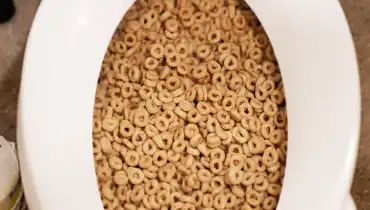We've encountered the article relating to Is it safe to flush food (especially rice) down the toilet? listed below on the web and decided it made perfect sense to talk about it with you on my blog.

Intro
Lots of people are frequently faced with the predicament of what to do with food waste, especially when it concerns leftovers or scraps. One common question that occurs is whether it's alright to purge food down the commode. In this write-up, we'll explore the reasons individuals may think about purging food, the repercussions of doing so, and alternative approaches for proper disposal.
Reasons that people may consider flushing food
Lack of understanding
Some people might not understand the possible injury triggered by purging food down the bathroom. They may erroneously think that it's a safe practice.
Benefit
Flushing food down the toilet might seem like a quick and easy solution to disposing of undesirable scraps, specifically when there's no neighboring trash can offered.
Laziness
In some cases, people might just choose to flush food out of sheer laziness, without taking into consideration the repercussions of their activities.
Consequences of flushing food down the commode
Environmental effect
Food waste that winds up in rivers can contribute to contamination and injury marine environments. Additionally, the water utilized to flush food can strain water resources.
Plumbing issues
Purging food can cause clogged up pipelines and drains pipes, creating pricey plumbing repair work and aggravations.
Sorts of food that must not be flushed
Coarse foods
Foods with fibrous textures such as celery or corn husks can obtain entangled in pipes and cause blockages.
Starchy foods
Starchy foods like pasta and rice can absorb water and swell, bring about clogs in pipelines.
Oils and fats
Greasy foods like bacon or cooking oils should never ever be purged down the bathroom as they can strengthen and trigger clogs.
Appropriate disposal methods for food waste
Utilizing a waste disposal unit
For homes equipped with waste disposal unit, food scraps can be ground up and flushed with the plumbing system. Nevertheless, not all foods appropriate for disposal in this fashion.
Recycling
Certain food packaging materials can be recycled, lowering waste and reducing ecological effect.
Composting
Composting is an eco-friendly method to deal with food waste. Organic products can be composted and made use of to enhance soil for gardening.
The importance of correct waste monitoring
Reducing ecological damage
Proper waste management techniques, such as composting and recycling, assistance minimize air pollution and preserve natural deposits for future generations.
Securing pipes systems
By avoiding the method of flushing food down the commode, house owners can prevent expensive plumbing repairs and maintain the integrity of their plumbing systems.
Final thought
To conclude, while it may be appealing to flush food down the bathroom for benefit, it's important to understand the potential consequences of this activity. By embracing proper waste monitoring techniques and dealing with food waste responsibly, people can contribute to healthier pipes systems and a cleaner setting for all.
FLUSH FOOD DOWN THE TOILET?
FLUSHING FOOD CAN CAUSE BLOCKED DRAINS IN YOUR HOME
All of the plumbing fixtures in your home are connected to the same sewer pipe outside of your home. This outdoor sewer pipe is responsible for transporting all the wastewater from your home to the Council sewer mains. Even small pieces of food that go down the kitchen sink can cause problems for your sewer. It should therefore be obvious that flushing larger bits of food, such as meat, risks a clog in either the toilet itself or the sewer pipes. Flushing greasy food is even more problematic because oil coagulates when it cools, coating the interior lining of your pipes.
THE TOILET IS NOT A BIN
Food isn’t the only thing that people shouldn’t be flushing down the toilet. People use the toilet to dispose of all kinds of things such as tampons, makeup wipes, dental floss, kitty litter and even underwear. Water goes to great lengths to educate residents about the high costs and stress placed on wastewater treatment systems simply from people flushing the wrong stuff down the toilet. It costs taxpayers millions of dollars each year, and homeowners thousands in blocked drain repairs.
FLUSHING FOOD IS A WASTE OF WATER
Flushing food is a waste of our most precious resource - water. In June this year Level 1 water restrictions were introduced to protect water supply from drought conditions. Much of New South Wales continues to be affected by prolonged drought with recent figures revealing up to 97 per cent of the state remains in drought. Depending on whether you have a single or dual flush toilet, every single flush uses between five and 11 litres of water. In the current climate this is a huge amount of water to be wasting on flushing food that should be placed in the bin (or better yet, the compost).
https://www.jabplumbingsolutions.com.au/blog/can-you-flush-food-down-the-toilet

Do you really like reading up on Is it safe to flush food (especially rice) down the toilet?? Write a remark directly below. We would be glad to see your thoughts about this blog. We hope that you visit us again in the near future. Are you aware of somebody who is looking into the topic? Please feel free to promote it. Thanks for your time spent reading it.
Give Me A Quote!